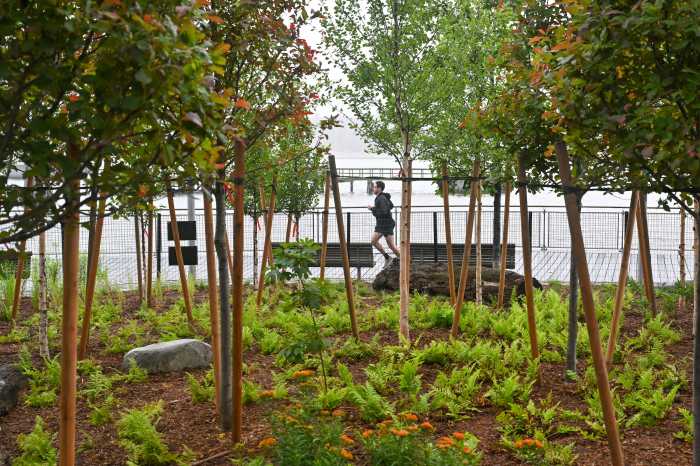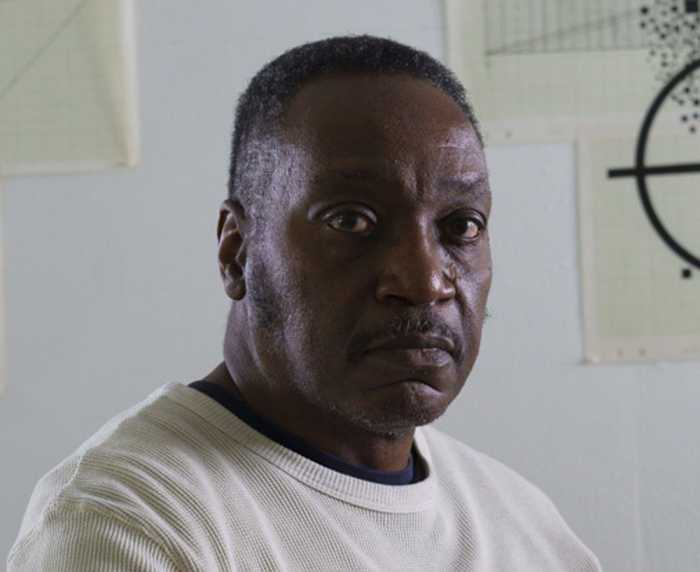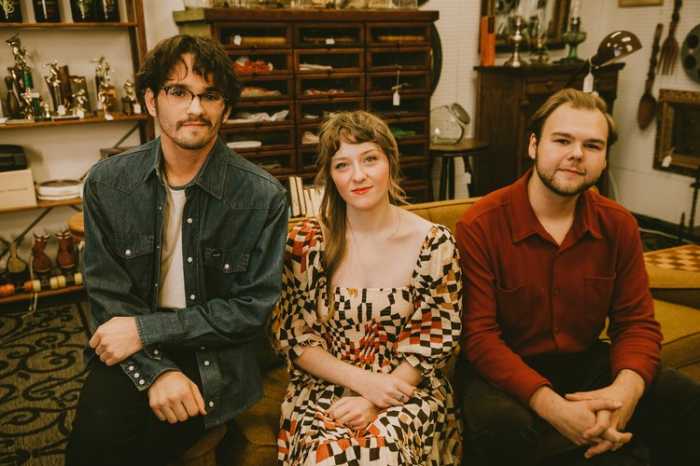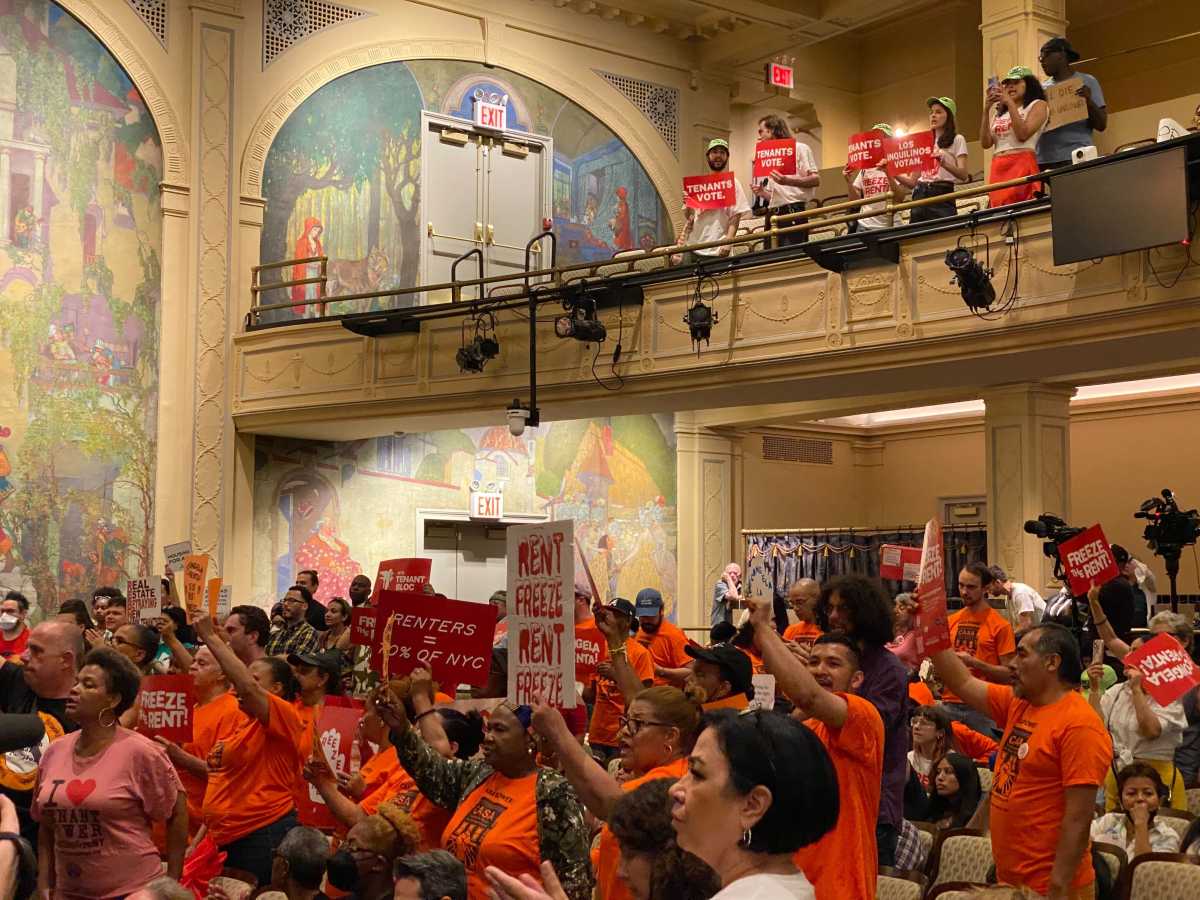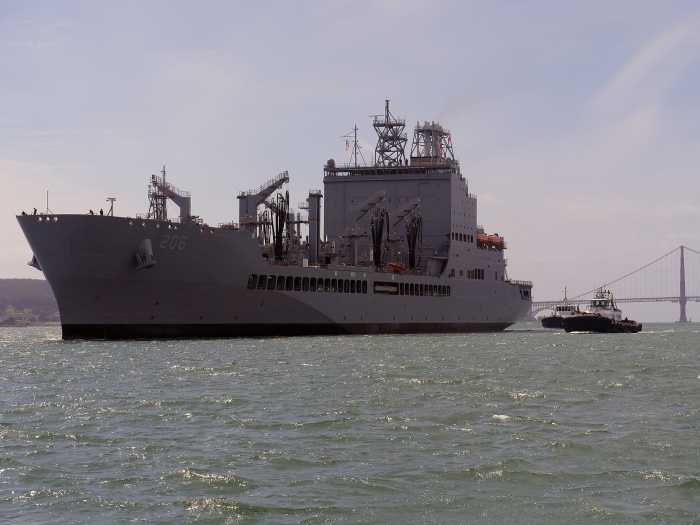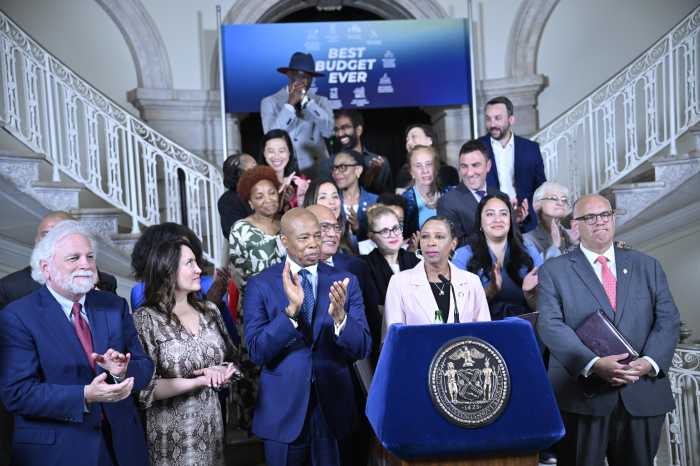Last Wednesday, the city’s Department of Transportation unveiled a plan it hoped would quell the unrest surrounding the controversial Kent Avenue bike lanes, which the agency installed last October as a prelude to the Brooklyn Greenway.
Though the new plan solved some problems, it begat a few others, as many residents on nearby inland streets complained the proposal would send truck traffic in their direction. The continuing squabble about the lanes has shown the inherent difficulty of determining how public space is used in New York City, especially in an area as diverse – and with as many clashing interests – as Williamsburg.
The plan itself, which DOT officials said could be implemented as early as July, calls for Kent to become a one−way, northbound street in Williamsburg starting at N. 14th Street. Removing the southbound lane of traffic would allow for two bike lanes on the west side of the street, as well as two dedicated lanes for parking and loading zones, one on the far east side of the street and one “floating lane” between the cars and the bike lanes on the west side.
In essence, the floating lane would serve as a buffer for cyclists. Teresa Toro, Chair of the Community Board 1 Transportation Committee, noted “the delicious irony that we’re using cars as a protective barrier for cyclists and walkers.”
The plan addresses the concerns of residents and businesses along Kent who have protested the lanes since they were installed. Residents, concentrated mostly on the southern portion of Kent Avenue, have said the lanes make parking impossible and generally disrupt their lifestyle. Businesses on the strip’s northern portion say the lanes and the consequent loss of loading zones make it impossible to do business.
DOT officials said the new plan would restore 200 of the 240 parking spaces taken away by the lanes. They also said the plan would solve the speeding problems on Kent that have gotten worse since the lanes were installed.
The new plan seemed to have the support of the majority of the Kent Avenue residents and businesses, as well as Toro, an ardent supporter of bike lanes.
“It’s clearly better thought−through than what’s on the street now in terms of residents and business, and it’s safer for cyclists and pedestrians,” she said.
But residents of nearby streets loudly criticized the plan at the meeting, essentially replacing the Kent residents and businesses as the aggrieved party.
Their complaints revolve around the truck traffic that would be diverted off Kent, a truck route, by making it one−way.
Under the plan, southbound truck traffic would be diverted onto Wythe Avenue on N. 14th Street, where Kent becomes one−way. From there, trucks would go three blocks south to N. 11th Street, whereupon they would make a right onto an existing truck route on N. 11th Street. They would then go east on N. 11th to another truck route on Union Avenue.
Residents of nearby southbound streets were fearful that without the option of going south on Kent Avenue, trucks would defy the law and use their streets, which are not truck route.
“Even though the plan is to divert [truck traffic] across N. 11th Street, by default, the [trucks] will go down Wythe and Driggs,” said Nancy Buivid, who lives on Wythe between S. 1st and S. 2nd Streets. “There’s no way there’s enough enforcement to prevent it.”
A Driggs Avenue resident said: “Truck routes should be kept on the outskirts of the neighborhood, on Kent Avenue. The whole idea of the bike lanes was to be ‘green,’ but they’re encouraging these trucks to go through the neighborhood.”
Toro, while supportive of the plan, said she sympathized with opponents of the plan. She said the complaints point to the need for “serious, dedicated truck enforcement in our community, which we’ve been fighting for for years. That would help a lot.”
DOT officials said that while imperfect, the plan represented the best option.
“Right now we have a situation on Kent Avenue that is not working,” said Deputy Commissioner David Woloch.





